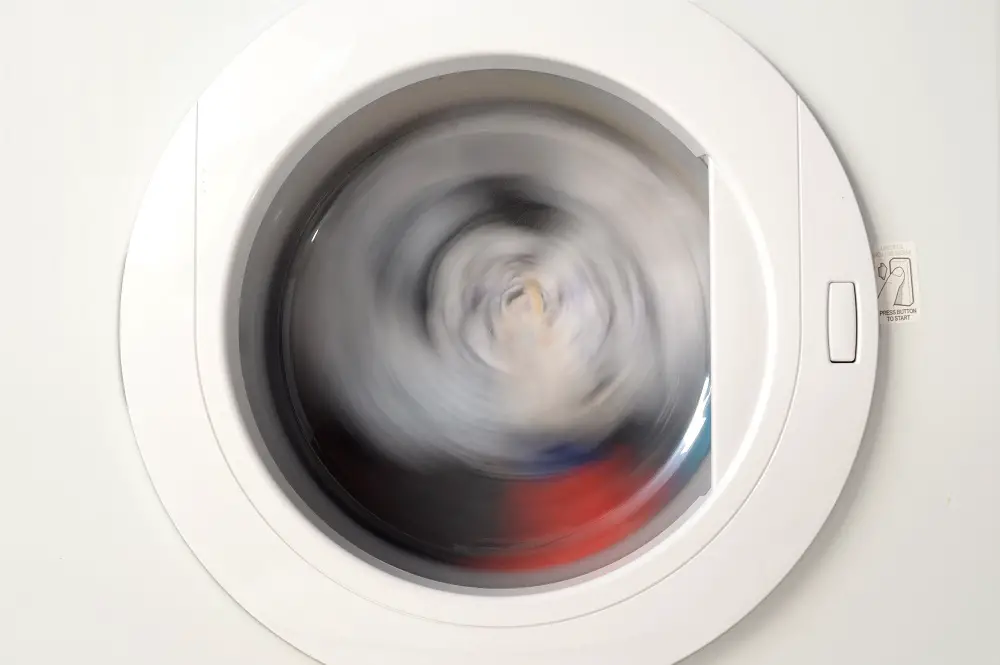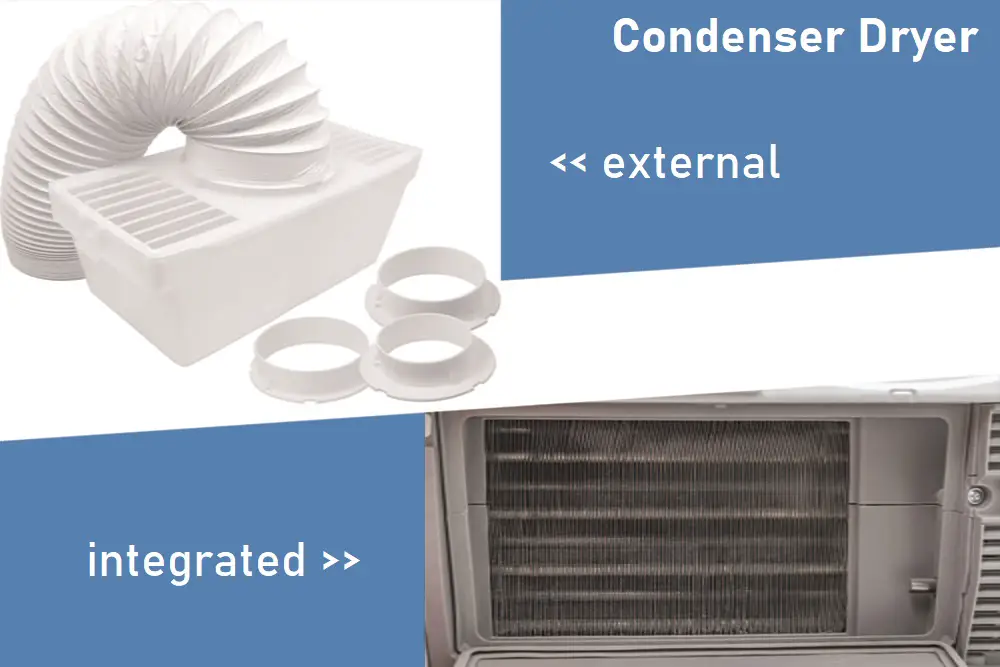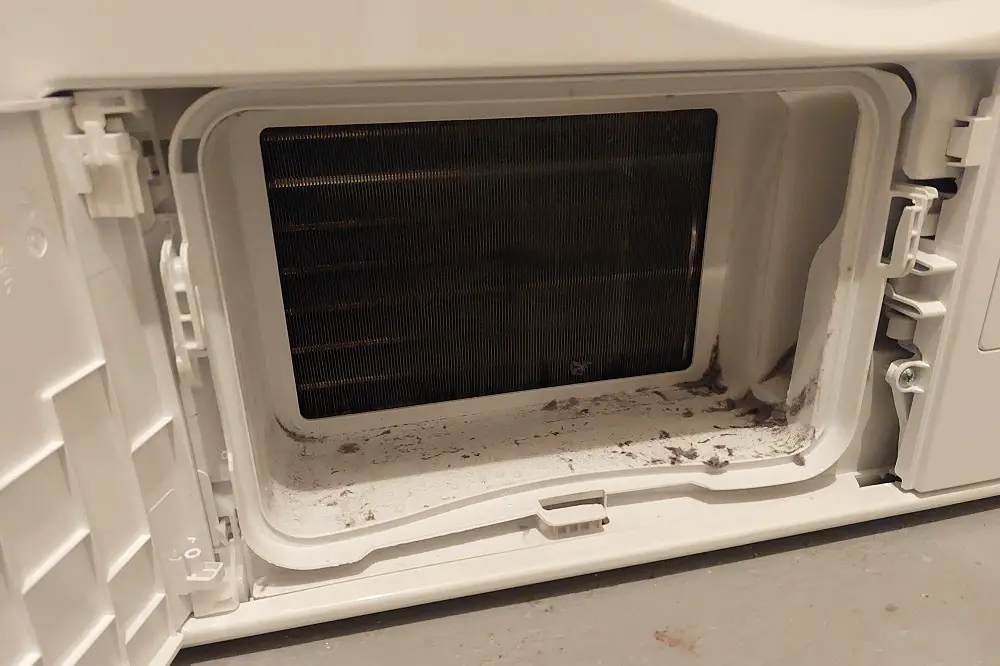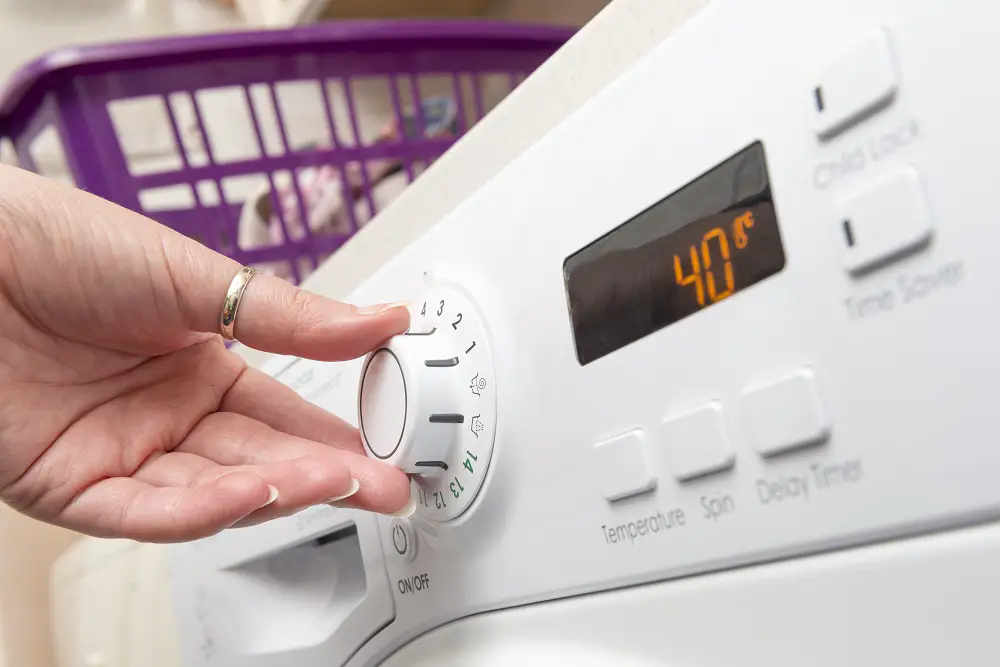While tumble dryers are the most popular laundry method, there is also the often under-estimated or lesser-known spin-drying process. Hence, the question is – should you spin clothes before drying them?
Using a spin dryer or an extra spin cycle in washing machines for wet laundry helps remove excess moisture. Whether you follow with tumble drying or air drying, it will help dry clothes faster.

Unlike a tumble dryer that uses heat for drying clothes, the spin-drying process uses centrifugal force to extract moisture from the laundry.
Table of Contents
Spin Dry Before Drying Is a Good Idea
Spin Dry wet laundry can make the drying process 20 times faster and reduce the energy cost of a tumble dryer significantly. The most effective way is to use a dedicated spin dryer with a high-speed tumble.
Spin dryers spin at approximately 3200 revolutions per minute (rpm) and remove as much water in just 2 – 3 minutes as a conventional dryer does in 25 -35 minutes.
Most stand-alone spin dryers run for a maximum of five minutes per load.
Alternatively, if you don’t have a spin dryer, running an extra spin cycle in your washing machine at the highest spin speed also helps wring out the excess water from the laundry.
The spin-dry cycles in washers have speeds ranging between 1000 – 1600 rpm. A faster spin speed removes most of the water from your laundry at the end of the wash cycle.
Depending on the type of fabrics you have in the washing machine (Cotton, Wool, Synthetic, etc.) and provided you’ve chosen the appropriate wash program, the machine will have a default spin speed for different types of clothes.
Cotton items typically need 900-1400 rpm, synthetic items require 800-1000 rpm, and wool items need a slower spin speed of about 600-800 rpm.
While spin dryers or spin cycles might not completely dry the laundry, they effectively reduce the drying time in a tumble dryer (and help reduce energy costs) or for line-drying clothes.
Less than an hour in the tumble dryer or about 1-2 hours of line drying would suffice after spin-drying.
Here are some statistics that show how much residual moisture (water content) remains in the laundry for different spin speeds.
| Spin Speed | Residual Moisture Remaining |
|---|---|
| 800 RPM | 70% |
| 1200 RPM | 52% |
| 1400 RPM | 50% |
| 1600 RPM | 44% |
| 3200 RPM | ~5 – 10% |
Can a Spin Dryer Fully Dry Clothes?
A spin dryer can’t dry the laundry completely. It isn’t designed to get your clothes fully dry and will leave a moisture of 5 – 10 % in the items. It is always necessary to complete the drying process afterward.
However, with high spin speeds, it removes a large proportion of moisture and what you pull out of the machine is damp laundry instead of dripping wet laundry.
You can air dry or tumble dry afterward, which will now take much less time.
Read more about the Differences between Tumble Dryer and Spin Dryer.
Do I Rinse or Spin First?
A rinse always precedes spin-drying. In washing machines, regardless of the cycle you choose, the clothes go through a wash cycle, then one or more rinse cycles (without detergent), and a final spin to remove excess water.
Rinsing helps remove soapy residues from the washed clothes.
Spinning can be a part of the machine’s regular wash program, or you could place the wet clothes in a spin dryer before spreading them out on a drying rack or hanging them to dry.
If you’re hand washing your clothes (especially delicate garments or ones that bleed color), always rinse sufficiently before putting the clothes in a spin dryer. Clean and soap-free rinsed water is a good indicator for ready-to-spin items.
How Long Should You Spin Dry Your Clothes?
How long you should spin-dry your clothes varies depending on the laundry load type and wetness level. The spin process should be repeated or continued as long as significant water drains in the spin dry cycle. Normal spin drying takes 3 – 10 minutes.
Washing machines usually have fixed spin times and speeds depending on the wash program selected.
The spin cycles of most washers take an average of three minutes but can take anywhere between 2 – 12 minutes, depending on the chosen cycle and load size.
Here’s an estimate of the spin-dry time required for different types of clothing:
- Heavy (blankets, thick towels, jeans, etc.): 4 – 5 minutes
- Normal clothes: 3 – 4 minutes
- Delicate items: 2 – 3 minutes
If the clothes are still wet after a single spin:
- With washing machines, consider running an extra spin-only cycle.
- With spin dryers (most have fixed time runs), repeat a short cycle (or a complete cycle if it’s within 5 minutes) and check how much water drains. If there is very little water draining, stop the spin.
Should I Spin Dry Twice in the Washing Machine?
Running an extra spin dry cycle in the washing machine after the washer has finished all the cycles helps remove the excess moisture and cuts the dryer time by at least one-third. If the spin cycle at the end of the washing program didn’t get rid of enough water from the laundry, a second spin would do a better job.
It is especially useful for reducing the drying time for bedding, heavy towels, and jeans.
Also, if you don’t have a tumble dryer or it’s cold or rainy outside, running a second spin cycle will help the laundry dry faster and save time.
When NOT to Spin Dry?
Spin dry is not recommended for certain types of fabrics, like sensitive or delicate fabrics, to avoid any damage to such fabric types. Also, gym wear or other athletic apparel is best air-dried than spin-dried.


If your garment care label has a handwash symbol (tub with a hand) or a do not wring symbol (twisted symbol with a cross over it), it’s best to avoid spin drying such items.
Conclusion
Spinning clothes in the washing machine or spin dryer is a great way to reduce laundry drying time, whether air drying or tumble drying. An energy-efficient option itself, spin drying also shortens the time required in a tumble dryer, helping reduce energy bills.
However, it is essential to note that spin-drying doesn’t completely dry the laundry. While it removes excess moisture, the laundry will be damp and must be air-dried or tossed in the tumble dryer.
Running an extra spin cycle at the highest spin speed setting in the washing machine is recommended to wring out excess water for quick drying afterward.



